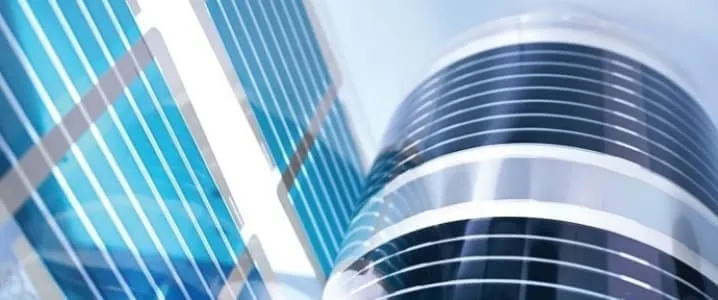Is This The Next Big Thing In Solar?
Sep 27, 2019 09:58 PM ET

Solar power installations out in the open are a common sight in many parts of the world, but how about household solar generators? A team of Swedish and Chinese scientists recently reported this might become part of our future after they successfully converted indoor light to electricity using organic photovoltaic cells.
Organic photovoltaic cells, or OPV cells, are a third-generation solar technology that holds a lot of promise as a cheaper alternative to previous generations of solar cells. They are flexible because they are made of two layers of semiconductors, which are made of plastic polymers. This flexibility makes OPV cells attractive for various applications, but they are particularly attractive for the building-integrated segment of the solar industry.
Interestingly enough, scientists studying these cells are not unanimous in how exactly they work. They know that when the cell absorbs a photon, it displaces an electron in the polymer atom, and this displacement leaves a hole. The hole bonds with the displaced electron creating what scientists call an exiton. This exiton then splits and the electron it releases goes on to bind to another hole, created by another photon. As the electrons move from hole to hole, they create an electric current. What makes the exiton split, however, is still open to debate.
This may be curious, and it might have implications for making OPV cells more efficient, as their average efficiency rate right now is just 11 percent. But until scientists discover what makes the exiton split, they are making advances elsewhere.
Researchers from the Linkoping University in Sweden, the Chinese Academy of Sciences and the University of Science and Technology in Beijing developed new polymers for the active layer—the one that absorbs the photons—of an OPV cell. This made it possible for the cell to generate power from ambient indoor light. The power, for now, is not very great but, according to the scientists, with further work, it could increase enough to power various devices that will be part of future households in the era of the Internet of Things.
Related: This “Anti-Solar Panel” Could Generate Power From Darkness
“We are confident that the efficiency of organic solar cells will be further improved for ambient light applications in coming years, because there is still a large room for optimization of the materials used in this work,” one of the researchers, professor Jianhui Hou from the Chinese Academy of Sciences, said, as quoted by Photonics Media.
"The digitalization of our society is ramping and Internet of Things and smart devices are a strongly growing market," another of the authors, Jonas Bergqvist said. "Many of these devices consume low amounts of power and efficient light energy harvesting devices can help powering them. The high performance OPVs combined with printing and coating roll to roll production shows a great potential to power connected smart things."
OPV cells are cheap to make and they can be printed on large surfaces in a printing press. This makes them a valuable addition to the growing industry of solar power technology as long as the challenge of efficiency is solved, along with the other main problem with OPVs: durability.
Also read

